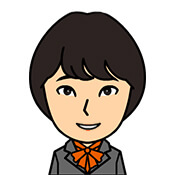
When it comes to a little math and numbers, it is useful to be able to speak that in Korean.
Let’s practice reading simple mathematical formulas in Korean.
The addition.
Addition is “덧셈”, sum is “합”.
Addition is speaked 덧셈 in Korean.

Addition is a fundamental mathematical operation.
There are also words such as 합산(合算) and 가산(加算), but the most commonly used is 덧셈.

The sum of 200 and 35 is 235.
And there is also a word 합 which means the sum of addition.
Adding numbers is “더하다”.
We use 더하다 to express adding a number.

Add 300 to 100 and you get 400.

If you add 775 and 8, you get 783.
It does not use difficult grammar and can be expressed as long as you know how to read numbers.
How to read addition symbols.
The addition sign “+” is speaked 더하기.

구십팔 더하기 육십이는 백육십

삼십오 더하기 이십일은 오십륙
더하기 is the noun form of 더하다 with “-기”.
Also, equal “=” is speaked -은/는.
The subtraction.
Subtraction is “뺄셈”, difference is “차”.
Subtraction is speaked 뺄셈 in Korean.

Subtraction is just as important as addition.
There are also words like 감산(減算), but let’s learn 뺄셈 first.

The difference between 75 and 32 is 42.
The word for the subtraction answer is 차.
Subtracting number is “빼다”.
We use 빼다 to express subtract a number.

Subtract 2 from 50 and you get 48.

If you take 250 out of 1000, the remainder is 750.
The way it is expressed will be similar to addition.
How to read subtraction symbols.
The subtraction sign “-” is speaked 빼기.

천이백삼십사 빼기 삼십사는 천이백

삼백십삼 빼기 칠십육은 이백삼십칠
빼기 is the noun form of 빼다 by -기.
민수네 집에서 지하철역까지 100m입니다. 민수는 집에서 지하철역을 향해 35m를 걸었습니다. 지하철역까지 남은 거리가 얼마인가?
답:
※Tap to see the answer.
Since this is an exercise in reading formulas, you do not have to be able to do the problems.
The multiplication.
Multiplication is “곱셈”, product is “곱”.
Multiplication is speaked 곱셈 in Korean.

I studied multiplication in second grader.
There is a word 승산(乗算) in multiplication, but for now, let’s learn 곱셈.

The product of 24 and 3 is 72.
The word for the multiplication answer is 곱.
Multiplicating number is “곱하다”.
We use 곱하다 to express multiplicat a number.

Multiply 280 by 3 and you get 840.

Multiply 72 by 0.1 to get 7.2.
Since the method of expression is the same as that of addition and subtraction, we will omit the details.
How to read multiplication symbols.
The multiplication sign “×” is speaked 곱하기.

칠십오 곱하기 이점사는 백팔십

오분의 이 곱하기 이는 오분의 사
You can use 곱하다 as 곱하기 with -기.
Then, let’s try to solve a math problem in Korean.
a=3, b=1012일 때 다음의 값을 구하시오.
a×b=?
답:
The division.
Division is “나눗셈” and quotient is “몫”.
Division is speaked 나눗셈 in Korean.

If you can’t multiply, you can’t divide.
There is also a kanji word 제산 (除算), but it is usually fine to use 나눗셈.

The quotient of 24 and 3 is 8.
The word for the division answer is 몫.
몫 also means “share or portion”, and a piece of pizza or cake cut into pieces by several people is also “몫”.
Divisioning number is “나누다”.
We use 나누다 to express division a number.

Dividing 21 by 3 yields 7.

Dividing 58 by 14 yields 4 and not much 2.
The way division is expressed is the same as in other calculations.
How to read division symbols.
The division sign “÷” is speaked 나누기.

백 나누기 이십오는 사

삼분의 이 나누기 이는 삼분의 일
The noun form of 나누다 is 나누기.
There is no need to solve difficult calculation problems, just practice reading.
